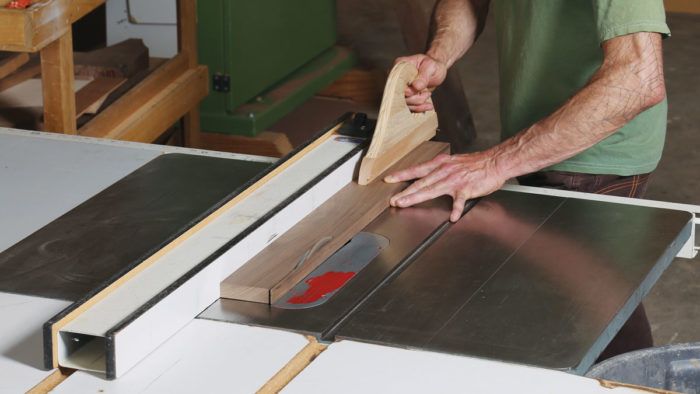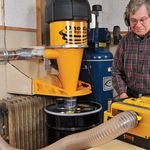The Physics of Machine Safety
To cut safely, stay focused on the forces exerted by the spinning blade or bit.

It was only after many years of working wood—and one big scare—that I began to think seriously about machine safety and developed a real understanding of the forces at work when a spinning blade or bit cuts a piece of wood. In this article, I’ll show you how to compensate for those forces and control the workpiece as you work at the table saw, bandsaw, jointer, drill press, and router table.
My awakening came 17 years into my career. I began working as a carpenter at 18, and I saw some pretty frightening things on job sites. Carpenters seem fond of running blades within an inch or two of their fingers. After 14 years in the building trades, I was burned out but unscathed.
Having found inspiration in some custom furniture I had seen, I began to design and build furniture. Three years later, at age 35, my right hand was pulled into a table saw blade by a kickback. The blade nicked the tip of one finger, but otherwise, I was unhurt. I was very fortunate, but luck doesn’t last, so I began to study the machines I used daily. I wanted to understand how they cut, so I could use them more safely.
The table saw presents the most complex challenge to maintaining control. You must keep the workpiece moving forward, flat on the table, and pressed against the fence. Failing to do any one of these three things can result in serious injury. Fortunately, a pair of hands and a push stick are all you need to combat those forces and stay in control. Past the blade, the workpiece engages the splitter, which helps keep the board against the fence.
As it cuts, a bandsaw blade exerts a downward force that pushes the workpiece onto the table. This is fine as long as the part you are cutting is flat. Things get a bit tricky when the workpiece is curved and only contacts the table at one point. If you keep that point of contact right in front of the blade, you’ll be OK. When cutting thin slices from a board, use a push stick to protect your hand in case the blade wanders from the cut and out of the board.
Fine Woodworking Recommended Products

Freud Super Dado Saw Blade Set 8" x 5/8" Bore

Rockler Dust Right 650 CFM









Comments
The irony of this article is that Todd is not exhibiting best safety practice. A fundamental safety feature of a table saw is the blade guard. I write for a UK woodworking magazine and they will not accept any image that is missing the blade guard.
A friend recently lost the end of his thumb using the table saw in the same fashion as Todd is demonstrating - pushed it through the blade with a push stick and then reached for the piece at the exit - as he was picking the piece up it caught the rising teeth and pulled the wood across the blade - his hand followed. He now uses the blade guard for all rip and cross cuts.
Also, Ellen Kaspern's article does not even use a riving knife - this is a kickback accident waiting to happen.
As the premier woodworking magazine I believe that you owe it to your readers to demonstrate proper power tool use.
Hi there,
Thanks for the article. I have just started a Furniture Restoration course and from what I can see in the picture the table saw does have a riving knife. however I would use two push sticks one in the off hand to keep the wood in contact with the fence. Interesting to see the differences in thoughts for the for blade guards on table saws. I found this blog post that put it into perspective.
https://www.popularwoodworking.com/woodworking-blogs/table-saw-safety-why-the-british-think-were-crazy
Log in or create an account to post a comment.
Sign up Log in